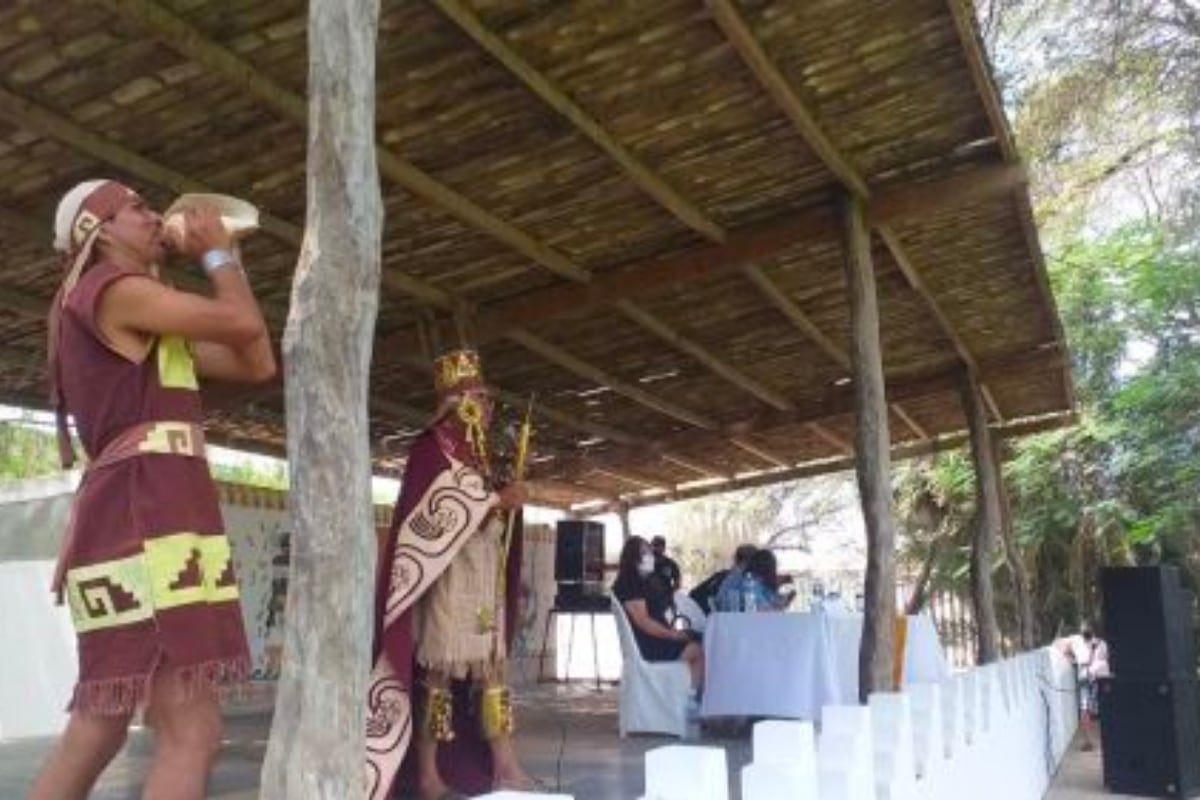:quality(85)/cloudfront-us-east-1.images.arcpublishing.com/infobae/KKX7BGG3K5FGXHVVXUZ35PPQBA.png 420w)
Peru is characterized by having had different cultures throughout its history, among them is the Sicán culture of Lambayeque, where the tomb of a surgeon was found 900 and 1050 years old. This was discovered by a group of archaeologists in a ceremonial temple in the north, as the researchers reported.
“We have managed to find the tomb of a figure who was working as a surgeon of the Sicán culture, more than 1,000 years old,” announced the archaeologist Carlos Elera.
The discovery occurred at the end of 2021 at the Las Ventanas mausoleum temple, in the Pómac Forest Historical Sanctuary, in the Lambayeque region, about 800 km north of Lima.
The character wore a “golden mask” and played the role of surgeon. It belonged to the period of the Middle Sicán culture, which developed between the years 900 and 1050 AD, according to archaeologists.
“The character was a specialist in cranial trepanations and his surgical instruments were oriented to everything that was human skull surgery,” said Elera, director of the Sicán National Museum.
In ancient Peru, cranial trepanation was common practice as a surgical procedure to remove hematomas or remove parts of skull bones that were fractured probably during warrior clashes.
FOUND ITEMS IN THE TOMB: MASKS AND TUMIS
The tomb contained a golden mask with feathered eyes, a large bronze breastplate and other objects that speak of the status of the ancient character, who was buried in a lotus flower position, sitting cross-legged.
“In northern Peru, it is not usual to find this type of character,” said the specialist.
Surgical instruments such as tumis or knives with a crescent-shaped edge (made of a mixture of gold and silver), dozens of knives with wooden handles, awls and needles were also found in the tomb. Likewise, the bark of an unknown tree that would be one of the plant species used as an analgesic or infusion.
“We are comparing the instruments of a modern surgeon with these objects, to see what similarities they have,” he said.
Elera indicated that the discovery corresponds to archaeological investigations initiated between 2010-2011 in the southern necropolis of Huaca (temple) Las Ventanas. Work resumed last November, but ended in January due to the rains in the area.
He stressed that these findings have a resemblance to what the Paracas culture did, on the southern coast of Peru (700 BC and 200 AD), famous for trepanations. The so-called Sicán culture - which emerged around the years 700 to 750 AD and was in force until 1375 - worshipped the Lord of Sicán, the most prestigious religious figure in northern Peru. At that stage there were about seven to eight “lords of Sicán”, who represented heavenly power on earth, which they physically described with a mask with winged eyes and ears.
SICÁN CELEBRATED ITS
Recently, the Sicán National Museum celebrated 21 years of creation. This cultural site, after being closed for almost two years, reopened its doors on January 13th, reaching approximately 2,500 visits to date.
This cultural complex returned with novelties in the permanent exhibition of its collection, which includes the exhibition of new archaeological pieces.
As part of the celebrations for the 21st anniversary of its creation, the Vice-Minister of Cultural Heritage and Cultural Industries, Sonaly Tuesta Altamirano, was present, representing the Ministry of Culture, in addition to the directors of museums in the Lambayeque region, representatives of the high Andean communities, authorities and audience.

KEEP READING
